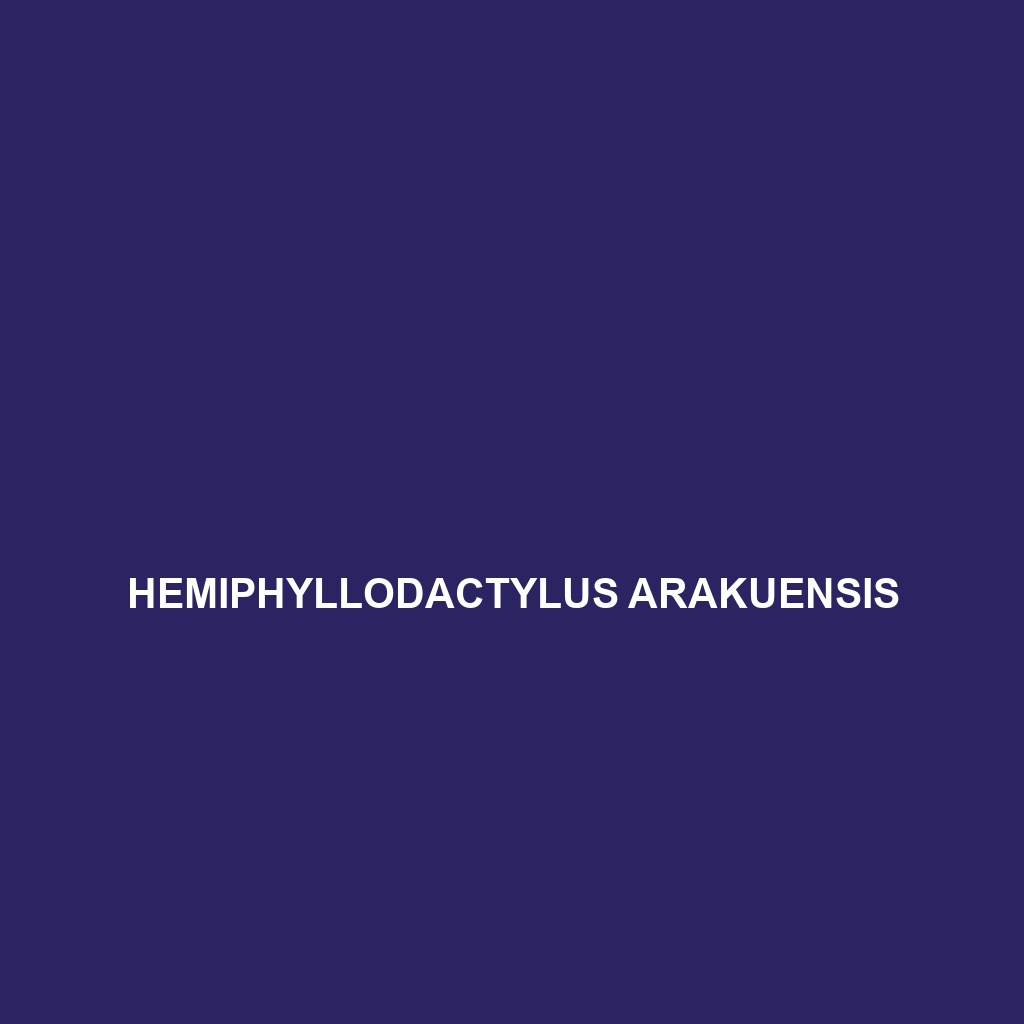Common Name
Hemiphyllodactylus arakuensis
Scientific Name
Hemiphyllodactylus arakuensis
Habitat
Hemiphyllodactylus arakuensis is primarily found in the tropical rainforests of the Eastern Ghats in India, specifically in the Araku valley region of Andhra Pradesh. This lizard prefers humid, dense forest environments that provide ample cover and food sources. The climate is characterized by warm, moist conditions, essential for its survival. As part of its habitat, H. arakuensis inhabits areas with well-developed vegetation, which helps it to camouflage against predators. These rainforests are rich in biodiversity and offer a complex structure that integrates a variety of microhabitats, enabling the species to thrive.
Physical Characteristics
Hemiphyllodactylus arakuensis displays unique physical characteristics that make it distinguishable from other species in the Hemiphyllodactylus genus. Typically, individuals range from 6 to 10 centimeters in length. They possess a slender body with elongated limbs and a relatively large head. The skin is smooth with a mottled appearance, incorporating shades of brown and green, which assists in their camouflage among the rainforest foliage. One notable feature is their specialized toe pads, which allow for climbing on vertical surfaces. This adaptation is particularly beneficial for navigating the forest canopy, where sunlight and space competition is fierce.
Behavior
This species exhibits primarily nocturnal behavior, becoming active at night to evade daytime predators. During their active hours, H. arakuensis engages in foraging, utilizing its excellent climbing abilities to navigate trees and shrubs. Mating rituals are particularly fascinating; males often display territorial behaviors, engaging in push-up displays to attract females and establish dominance. Furthermore, they have been observed to utilize vocalizations during breeding seasons, which adds another layer of social interaction among individuals.
Diet
Hemiphyllodactylus arakuensis is classified as an insectivore, primarily feeding on a diet consisting of various insects, including ants, beetles, and moths. Their foraging method involves ambushing their prey from a hideout in the vegetation, utilizing their keen eyesight and quick reflexes to capture snacks effectively. They may occasionally consume smaller invertebrates, showcasing a degree of dietary flexibility. This insect-eating habit also plays a crucial role in controlling insect populations within their habitat.
Reproduction
The reproductive cycle of Hemiphyllodactylus arakuensis typically occurs during the wet season, which coincides with an abundance of food resources and optimal environmental conditions. Mating involves a courtship display where males will perform specific movements to attract females. After mating, females lay clutches of 1-3 eggs in hidden crevices or under leaf litter to ensure protection from predators. The incubation period lasts approximately 30 to 60 days, depending on temperature and humidity. Parental investment is minimal; after laying eggs, females often leave them to fend for themselves.
Conservation Status
The conservation status of Hemiphyllodactylus arakuensis is currently classified as vulnerable, primarily due to habitat loss caused by deforestation, agricultural expansion, and urbanization. Conservation efforts are underway to safeguard its remaining habitats through protected areas and biodiversity programs. Despite these efforts, ongoing challenges, including illegal logging and climate change, pose significant threats to this unique species. The protection of its rainforest habitat is essential to ensure the continuation of H. arakuensis.
Interesting Facts
One fascinating feature of Hemiphyllodactylus arakuensis is its capability to regenerate its tail if lost due to predation. This ability not only helps in evading predators but also assists in camouflage, as the regenerated tail may differ in coloration from the original. Furthermore, this species is known to exhibit an unusual anti-predatory behavior where it feigns death when threatened, allowing it to escape notice from larger animals.
Role in Ecosystem
Hemiphyllodactylus arakuensis plays a vital role in its ecosystem, contributing to the balance of insect populations as a predator. By keeping these populations in check, it aids in maintaining the health and stability of its rainforest habitat. Additionally, as it feeds on insects, it serves as a food source for larger predators, creating a crucial link in the food web. Thus, H. arakuensis is integral to the ecological dynamics of the rainforests of Eastern Ghats, serving both as a predator and prey within its habitat.
